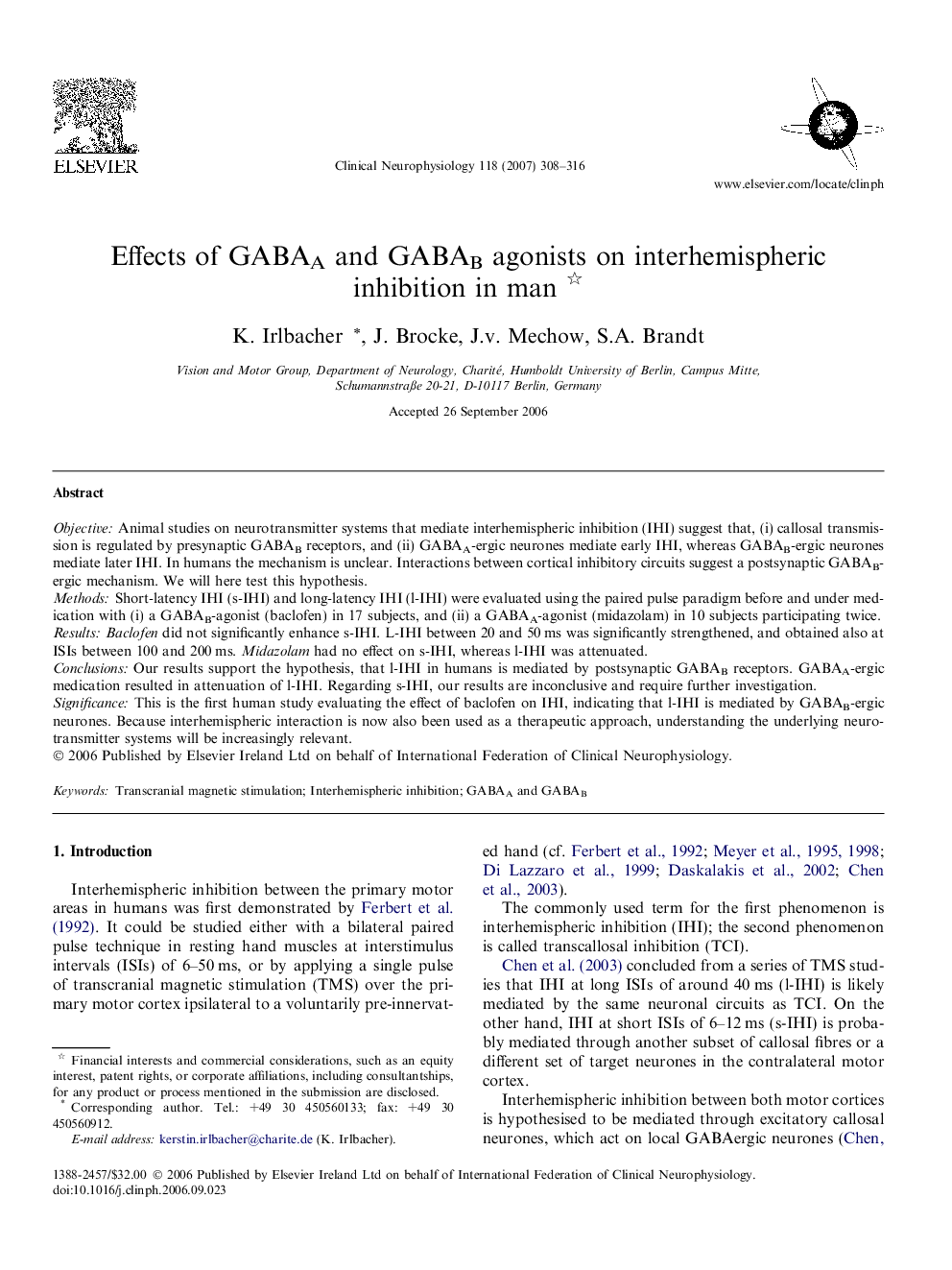| Article ID | Journal | Published Year | Pages | File Type |
|---|---|---|---|---|
| 3048012 | Clinical Neurophysiology | 2007 | 9 Pages |
ObjectiveAnimal studies on neurotransmitter systems that mediate interhemispheric inhibition (IHI) suggest that, (i) callosal transmission is regulated by presynaptic GABAB receptors, and (ii) GABAA-ergic neurones mediate early IHI, whereas GABAB-ergic neurones mediate later IHI. In humans the mechanism is unclear. Interactions between cortical inhibitory circuits suggest a postsynaptic GABAB-ergic mechanism. We will here test this hypothesis.MethodsShort-latency IHI (s-IHI) and long-latency IHI (l-IHI) were evaluated using the paired pulse paradigm before and under medication with (i) a GABAB-agonist (baclofen) in 17 subjects, and (ii) a GABAA-agonist (midazolam) in 10 subjects participating twice.ResultsBaclofen did not significantly enhance s-IHI. L-IHI between 20 and 50 ms was significantly strengthened, and obtained also at ISIs between 100 and 200 ms. Midazolam had no effect on s-IHI, whereas l-IHI was attenuated.ConclusionsOur results support the hypothesis, that l-IHI in humans is mediated by postsynaptic GABAB receptors. GABAA-ergic medication resulted in attenuation of l-IHI. Regarding s-IHI, our results are inconclusive and require further investigation.SignificanceThis is the first human study evaluating the effect of baclofen on IHI, indicating that l-IHI is mediated by GABAB-ergic neurones. Because interhemispheric interaction is now also been used as a therapeutic approach, understanding the underlying neurotransmitter systems will be increasingly relevant.
